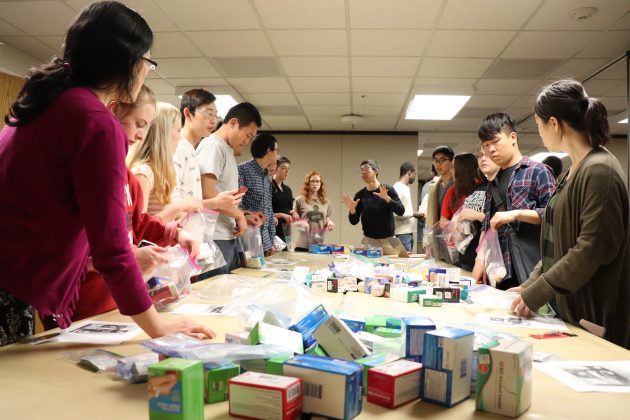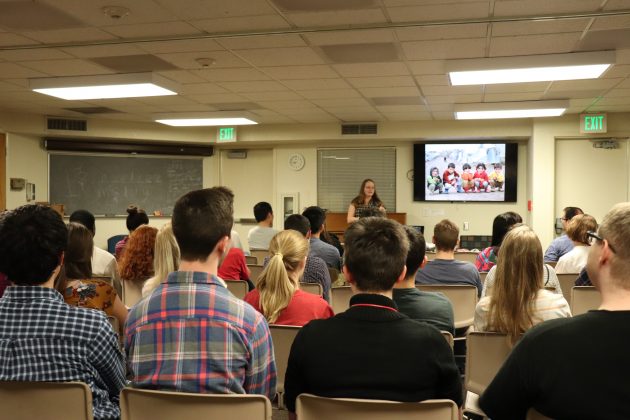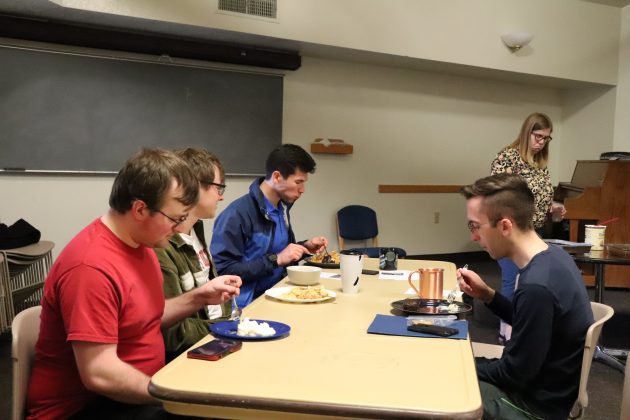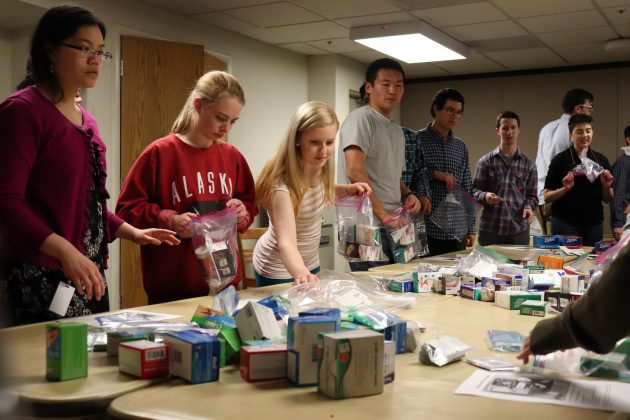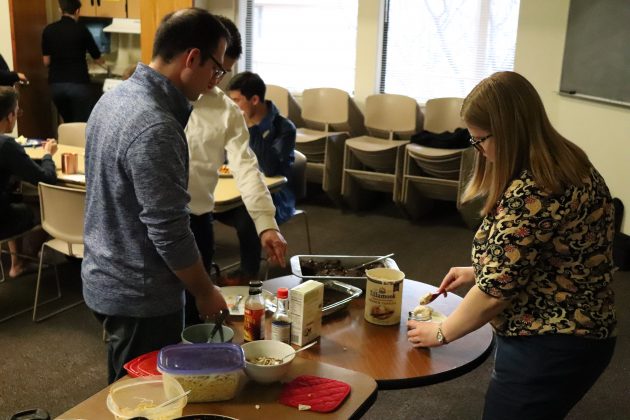Editor’s note: This story pairs with ‘Foreign language demand growing’
The BYU Foreign Language Student Residence is celebrating its 25th anniversary this month. Although the program thrives now, its initial approval took several years.
The university began buying private homes near campus in 1977. Four homes were purchased initially, but there was no clear plan for how they would be used. The language department then had the idea to use them as foreign language houses for students to live in.
The university added four more homes in 1981 and three years later added another four due to the success of the program. Several languages were housed among the 12 homes, but they were far apart from each other. They were also old and in need of repair. The maintenance was expensive and the department determined it was more expensive to maintain them than to build new ones.
German professor Hans-Wilhelm Kelling served as the chair of the proposal committee for a new language center in 1989. The original vision was to create a central meeting place with four homes around it and additional space around it for possible expansion in the future.
The committee submitted a proposal to the university and the board of trustees. The request was denied.
“They didn’t really give reasons why they turned it down, so we met again and I made a second proposal the next year and added some extra reasons of why we should have it and it was turned down again, but we didn’t give up,” Kelling said.
The proposal was finally approved the third time Kelling submitted it. The building which stands today was built in 1991.
BYU physics major Mark Standring has lived in the German house since returning from his mission.
Standring said the Foreign Language Student Residence on-campus housing currently houses nine language programs — Spanish, French, Portuguese, German, Russian, Chinese, Japanese, Korean and ASL. In past years the FLSR housed other languages including Italian, Arabic and Hebrew.
“The purpose of it is to help students who are taking language classes at BYU anyway develop their fluency and really get a feel for the language,” Standring said.
Each apartment houses six students, including a student who is a native speaker of the target language. Residents always speak the target language when they are at home.
Standring said a possible misconception about the language house is people might think it’s international housing where only people who are native speakers live. In reality, the language house is oriented towards language learners. People from almost every continent in the world live at the FLSR, according to Standring. However, most of the residents are Americans or others who are just learning the language.
“There’s so much camaraderie that happens,” Standring said. “We eat dinner with each other every night — it is a really close knit group; it’s very social.”
Kelling said one of the main benefits of the language housing is the confidence students gain through living there.
“They learn to listen to their language, they interchange with other people and they have good relationships,” Kelling said. “We notice in our classes, when we have students that live in the foreign language classes, they speak up. They lost their shyness.”
The residence also provides an opportunity for language immersion for students who haven’t had the chance to live abroad.
“It gives them the opportunity to learn in an environment that is almost equal to if they were in a foreign country,” Kelling said.
He said the residence allows students to appreciate their own culture, the culture of the language they are learning and the cultures of the other languages they are exposed to. Students living in the FLSR meet together in one LDS ward on Sundays. Sacrament talks, Relief Society and Elders Quorum are presented in English and Sunday School is presented in each target language.
“I love the diversity. I’m completely convinced it’s the most diverse ward in all of Utah; there’s people from all over the world in that ward,” Standring said.
Kelling said another benefit from living in the FLSR is that people gain greater appreciation for their own cultures and learn valuable things from other cultures.
The FLSR is holding an anniversary celebration on Thursday, March 29, in the Harmon Building Conference Center. All are welcome to attend, including current tenants and program alumni.
“It’s been 25 years, so some people that have been there will come back and see our progress and see how many have benefited from the program,” Kelling said.

